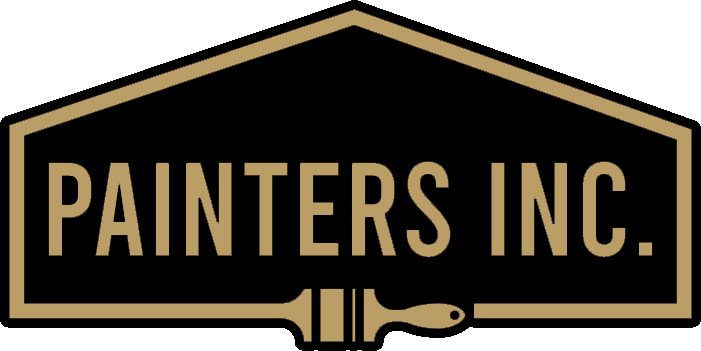When it comes to refreshing a room’s look with a fresh coat of paint, many people’s focus is on selecting the perfect color. While yes, choosing a color is an important step, it causes many DIY renovators to overlook a key step: primer.
Primer is one of the most essential pieces of the painting process. It helps create a smooth, long-lasting finish and makes sure your paint job stays in place. Whether you’re painting walls, furniture, or exteriors, using the right primer can make a huge difference.
Why is primer so important?
1. Improves Paint Adhesion
The number one reason to prime before you paint—paint adheres better to a primed surface. This reduces the chances of peeling or flaking over time by creating a bonding layer between the surface and the paint. It’s the easiest way to ensure a longer-lasting finish.
2. Enhances Paint Durability
Primer helps paint maintain its vibrancy and integrity for years by sealing pores on the surface and preventing excessive absorption. This is extra important in high-traffic or moisture-prone areas, like bathrooms and kitchens, or outdoor surfaces that may be exposed to the elements.
3. Provides Better Coverage
Primer helps block stains, discoloration, or any previous paint colors from showing through your new paint job. If you’re covering a dark color or water-damaged surface with a lighter shade, primer reduces the number of coats needed for full coverage.
4. Seals Porous Surfaces
Surfaces like wood, drywall, and stone absorb paint unevenly, which can lead to blotchy, messy-looking results. Using primer seals these materials so your coverage is smooth and uniform when you put up the final coat of paint.

When should I use primer?
Not every project requires a primer, but many do! Here are some situations where you definitely want to use primer…
- New drywall. Drywall is porous and absorbs paint unevenly. Using a drywall primer makes sure you end up with a smooth finish.
- Bare wood. Wood also absorbs paint inconsistently, and may have knots which cause discoloration. Using an oil- or shellac-based primer can help.
- Painting over dark colors. Primer helps neutralize bold or dark colors, so you won’t need as many coats of paint.
- Stained or damaged surfaces. Smoke stains, water marks, or knots in wood can show through paint unless you cover them up with a stain-blocking primer.
- Glossy or shiny surfaces. Slick finishes, like previously-painted trim or cabinets, need a bonding primer to keep paint from peeling off.
- Home exteriors. Outdoor surfaces are exposed to more moisture, UV rays, and temperature changes. Using a primer will make your siding paint job more durable.

How do I choose the right primer for my project?
Different projects require different types of primer. We’ve put together a breakdown of the main options and when you should use them.
1. Oil-Based Primer
Best for: Wood, metal, heavily stained surfaces, and surfaces that were previously painted with an oil-based finish.
Why? Fantastic adhesion and stain-blocking capabilities; great for surfaces that experience heavy use, like cabinets and trim.
Why not? Longer drying time and strong fumes; requires mineral spirits to clean
2. Latex (Water-Based) Primer
Best for: Drywall, soft wood, plaster, and stone masonry.
Why? Dries quickly, has low odor, and is easy to clean up with water. Works well for most interior walls and ceilings.
Why not? Less effective at blocking heavy stains and sealing in tannins in wood that might cause stains.
3. Shellac-Based Primer
Best for: Discolored areas, such as water damage, smoke stains, and wood knots.
Why? Great for blocking stains and preventing tannins from bleeding through paint.
Why not? Strong odor; requires denatured alcohol to clean up.
4. Bonding Primer
Best for: Glossy or slick surfaces, such as glass, tile, laminate, or metal.
Why? Adds a bonding agent that enhances paint adhesion on non-porous surfaces that can otherwise be difficult to paint.
Why not? Often more expensive than standard primers because it is necessary for tricky surfaces.

How do I apply primer for the best results?
1. Prepare the surface. Clean the surface thoroughly to remove dirt, dust, and grease. Sand any glossy surfaces lightly to help with adhesion, and repair any holes or cracks.
2. Choose the right tools. If you’re painting a large area, use a roller. For detailed areas, use a brush instead. For a spray application, be careful with dilution and nozzle settings.
3. Apply as evenly as possible. Use smooth, even strokes to avoid any streaks or drips. Make sure to allow enough time to dry before painting—usually 1-4 hours, depending on the primer.
4. Check for coverage. It’s okay to apply another coat of primer—in fact, you should if you can still see any stains or previous colors through the first layer.
Primer is a crucial step in achieving a professional, long-lasting paint job. By choosing the right primer for your surface, you’ll enhance adhesion, block stains, and save yourself time and effort in the long run. Before diving into your next painting project, take the time to prep with primer—it’s the foundation of a great paint job!

